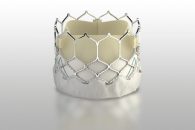Direct anticoagulant agents were associated with lower long-term mortality in patients with atrial fibrillation (AF) discharged after transcatheter aortic valve replacement (TAVR), compared with classic vitamin K antagonists. The purpose of this paper published in JACC Interv was to compare long-term results between classic vitamin K antagonists and novel direct anticoagulant agents in patients with…
Silent Stroke During TAVR and Early Cognitive Impairment
Silent stroke is common after transcatheter aortic valve replacement (TAVR). Co-morbidities such as diabetes or chronic renal failure, as well as procedural factors such as pre-dilation, increase the risk of silent stroke. While many events of silent stroke have an early effect on cognition, it is necessary to learn whether the impairment is sustained over…
SCOPE I: Acurate NEO vs Sapien 3, no non-inferiority at one year?
The randomized controlled study SCOPE 1 failed to show significant differences at one year between the self-expandable Acurate neo and the balloon expandable Sapien 3. The SCOPE 1 (Safety and Efficacy of the Symetis ACURATE neo/TF Compared to the Edwards SAPIEN 3 Bioprosthesis) compared the balloon expandable Sapien 3 (which has probably more data) against…
Surgeons’ Claim on Low-Risk Patients with Aortic Stenosis
Recent randomized trials including low-risk patients showed positive results for transcatheter aortic valve replacement (TAVR) compared with surgical aortic valve replacement. However, surgeons argue that these cases fail to consider patients from daily clinical practice, but rather include a population that has been carefully selected for randomized trials. Patients with non-tricuspid aortic stenosis, with severe…
High Deployment: Also Trending with Balloon Expandable Valves
Conventional implantation of balloon expandable SAPIEN-3 results in a final 70:30 or 80:20 ratio of the valve in the aorta/left ventricular outflow tract. This comes with permanent pacemaker implantation rates of approximately 10%. Higher deployment might translate into lower rates of conduction abnormalities and pacemaker implantation. The study compared a cohort of 1028 consecutive patients; 406…
Cusp Overlap for Higher CoreValve Implantation
Implant depth greater than the length of the membranous septum is an independent predictor of permanent pacemaker implantation. Valve implantation 3 to 5 mm below the aortic annulus in a projection coaxial to the device is recommended. The problem is this is rarely in the annular plane of the valve. Ideal annular plane projection is…
TAVR in Low-Risk Patients: Though still Superior, with Diminished Advantage after 2 Years.
At two-year followup, primary end point continued to be significantly lower with Sapien 3 vs. conventional surgery, but the initial difference in death and stroke in favor of TAVR started to shrink. In addition, there was higher risk of valve thrombosis in TAVR patients. The PARTNER 3 (Safety and Effectiveness of the SAPIEN 3 Transcatheter…
AAS vs Warfarin in Low Risk TAVR
We are still discussing the adequate antithrombotic scheme after transcatheter aortic valve replacement (TAVR). Additionally, we are treating a much wider array of patients ranging from low risk to inoperable. And there is yet one more important point: hypo-attenuated leaflet thickening diagnosed by CT. We are still unaware of the impact they have on device…
Improvements in COAPT Trial for Functional Mitral Regurgitation
Patients with heart failure and moderate-to-severe secondary mitral regurgitation may benefit from transcatheter mitral valve repair. There are benefits at 3 years, even in hard points such as mortality rate. The COAPT (Cardiovascular Outcomes Assessment of the MitraClip Percutaneous Therapy for Heart Failure Patients with Functional Mitral Regurgitation) trial showed fewer heart failure hospitalizations and…
Revascularization Is Needed Before TAVR
Disease prevalence in patients with severe aortic stenosis is highly variable: from 80% in inoperable patients to only 15% according to the most recent research including low-risk patients. Given the high mortality observed in patients with heart disease, guidelines suggest considering coronary bypass revascularization in those in need of a valve replacement. This experience with…
Data that Can Change TAVR and SAVR Strategy
In many relatively young patients with severe aortic stenosis, we rule out the idea of a mechanical valve, opting for a surgical aortic valve replacement (SAVR) with a bioprosthesis; we bet once the surgical bioprosthesis deteriorates, we will be able to solve it with transcatheter aortic valve replacement (TAVR) of the failed surgical valve: TAV-in-SAV. …










